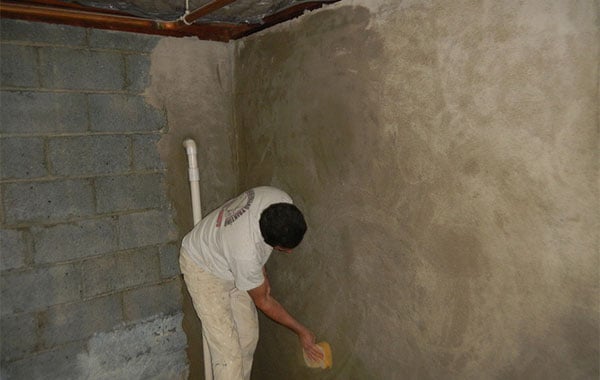How to Paint Your Basement
Does your basement need some repainting? Use our ‘how to paint your basement’ guide to make this vital space in your house better. You can contact a professional painter at ServiceSeeking.com.au to help you give your basement a professional touch.

A painted basement is easy to maintain, hides the imperfections, and improves the overall appearance of the room. To make your basement painting a success, you have to clean the surface thoroughly. You then need to use heavy-duty paint so that you can finish the job as quickly as possible.
But why do the basement painting yourself when you can hire a professional to do it for you at a relatively low cost? Getting your paint job done by a qualified and reliable tradesman will give you value for money. Use the ServiceSeeking.com.au database to get local painters who are ready to provide you with top-notch house painting services. What’s more, getting quotes from them is just a few clicks away. Try them today!
Follow the guidelines below to paint your basement successfully:
Choose the Correct Conditions
To make sure that the paint sticks to concrete, you need to treat it fast. You also need to select a day with the ideal temperature range so that the paint can adhere to the surface.
- Humidity – You can test the moisture in your basement by taping a plastic piece on the floor and allowing it to stay there for 24 hours. If moisture appears on the plastic, then the humidity in your basement is not ideal for painting.
- Use a dehumidifier – To get rid of the moisture in the basement, use a dehumidifier.
- Seeping water – If you find moisture under the plastic, it means that moisture is leaking through the concrete. To get rid of the problem, clean the gutters and downspouts.
- Temperature – The ideal temperature to paint the basement falls between 40 degrees Fahrenheit and 90 degrees Fahrenheit.
Clean the Basement Floor
You have to prepare the concrete floor for the painting so that the paint to adhere better.
- Remove the Furniture – You need to remove the furniture from the area that is being painted. The heavy-duty paint that you will use to paint your basement requires to be painted at once. You can’t finish a section and then come back to it later. A concrete floor must be adequately readied to ensure that the paint will adhere to it.
- Sweeping – Ensure that you have thoroughly cleaned the baseboards and all the debris that might ruin your paint job
- Degreasing – Use a degreasing agent to remove oil and any other substance that might form lumps on your paint job
- Scrub with detergent – Remember that your floor must be free of grime for the paint to stick. Use a mixture of water and detergent and a brush to scrub the floor thoroughly.
- Mop to dry the surface – Use a mop to clean all the water on the surface.
- Repair defects – If the basement floor has imperfections such as cracks, use the concrete patch kit to repair the defects.
Use Masking Tape to Cover the Floor
You can tape off the perimeter of the floor so that you can complete the job faster.
Choose the Paint
Since epoxy paints are scuff-resistant and adhere well to the concrete, and are easy to use, they are ideal for concrete floors.
- Mix paint with a catalyst – A catalyst ensures that the paint dries faster. If you’re in a hurry to paint the basement, then mixing your epoxy floor paint with a catalyst should get you done with the project much quicker.
- Use a brush – Use the brush around fixtures and the baseboards.
- Use a roller – Use the roller to cover more ground, starting from the far corner towards the door.
- Allow the surface to dry – Before you start applying the second coat, be sure that the surface is completely dry. Remember that for every coat of epoxy paint you use, you need to mix it with a catalyst to ensure that the floor price quickly.
How to Choose Paint Colours for Your Basement

Image source: Flickr by Olger Fallas / CC BY-ND 2.0
You need to paint your basement for several purposes, including adding drywall to an unfinished basement, sprucing up your basement to increase its value, and many other reasons.
To make your house, and I would to potential buyers, you need to consider the paint that you use in your basement carefully. Below are a few tips to help you with this.
Use Rich and Deeply Saturated Paint Colours
There is a common misconception that dark rooms are supposed to be painted light colours. This is wrong because even light colours will need an abundance of light for them to realise their potential for looking great.
Since the basement is usually a dark room, you will need to paint it with rich and deep hues to improve its lighting. The basement colours need to be richly saturated. A highly saturated mid-tone turquoise will do better than a dark-toned grey paint. If you have a preference for neutral colours, you can use grey or beige or light brown shade instead.
Paint Lighter Colours in Spaces That Get Abundant Light
The more light that filters into your basement, the better the paint looks, regardless of its colour. It is advisable to paint light colours on places that receive abundant light so that your basement may appear brighter. Such places include windows and areas that have been painted white.
Pick the Right Sheen
The sheen of your basement will determine how visible imperfections on the walls are and how the light reflects in the room, a critical consideration for the basement. The sheen also determines how easy it will be to make the space appear clean.
- Use satin paints – Use satin paint if your basement is usually damp and is easily affected by mould because the paint can withstand moisture better.
- Avoid matte paints – Matte paints don’t reflect light and are harder to clean. This translates into a very dark basement.

Image source: Flickr by Olger Fallas / CC BY-ND 2.0
Use Colours that are Suitable for the Materials Used
The colour you paint the basement should complement the materials that have been used to construct it. If for example, you have used brick walls, the adjacent wall should feature a cool, refreshing colour such as pale blue or mint green.
If your basement features carpeted floors and dry walls, use rich colours to paint it. You can add contrast by pairing dark colours on the floors with light colours on the wall.
Use Light Neutral Colours for the Ceiling
The fact that most ceilings in the basements are low hanging creates a dark effect in the room. Use neutral colours such as bright beige or pale yellow to lighten up the room. Avoid dark hues such as black, rich brown and dark blue.
There are lots of local roof painters who can provide you with top-notch services. Take a look at ServiceSeeking.com.au’s highest-rated roof painting specialists in these major cities:
Sydney | Melbourne | Brisbane | Perth | Adelaide | Hobart | Canberra | Darwin